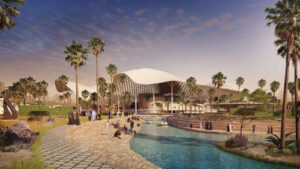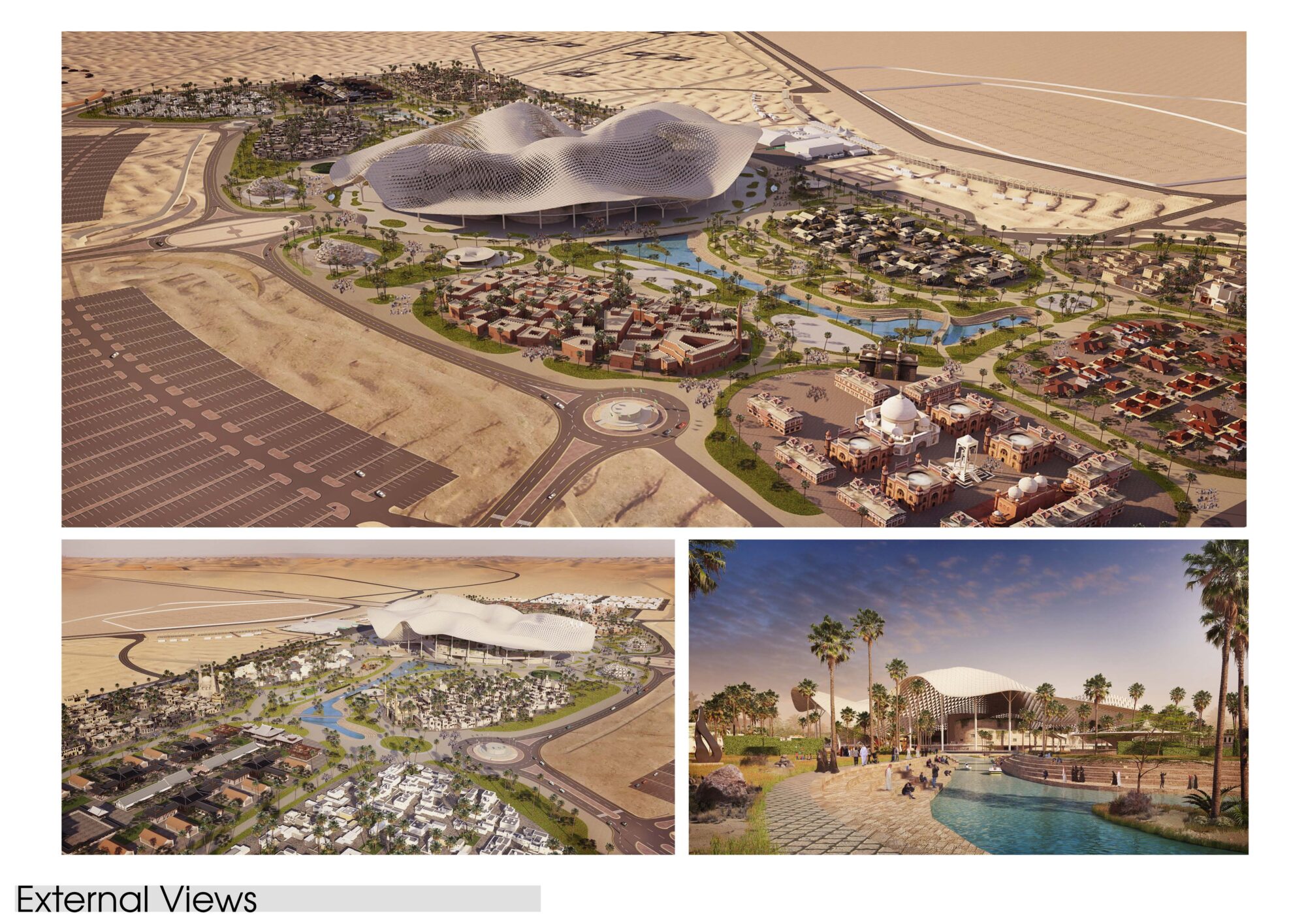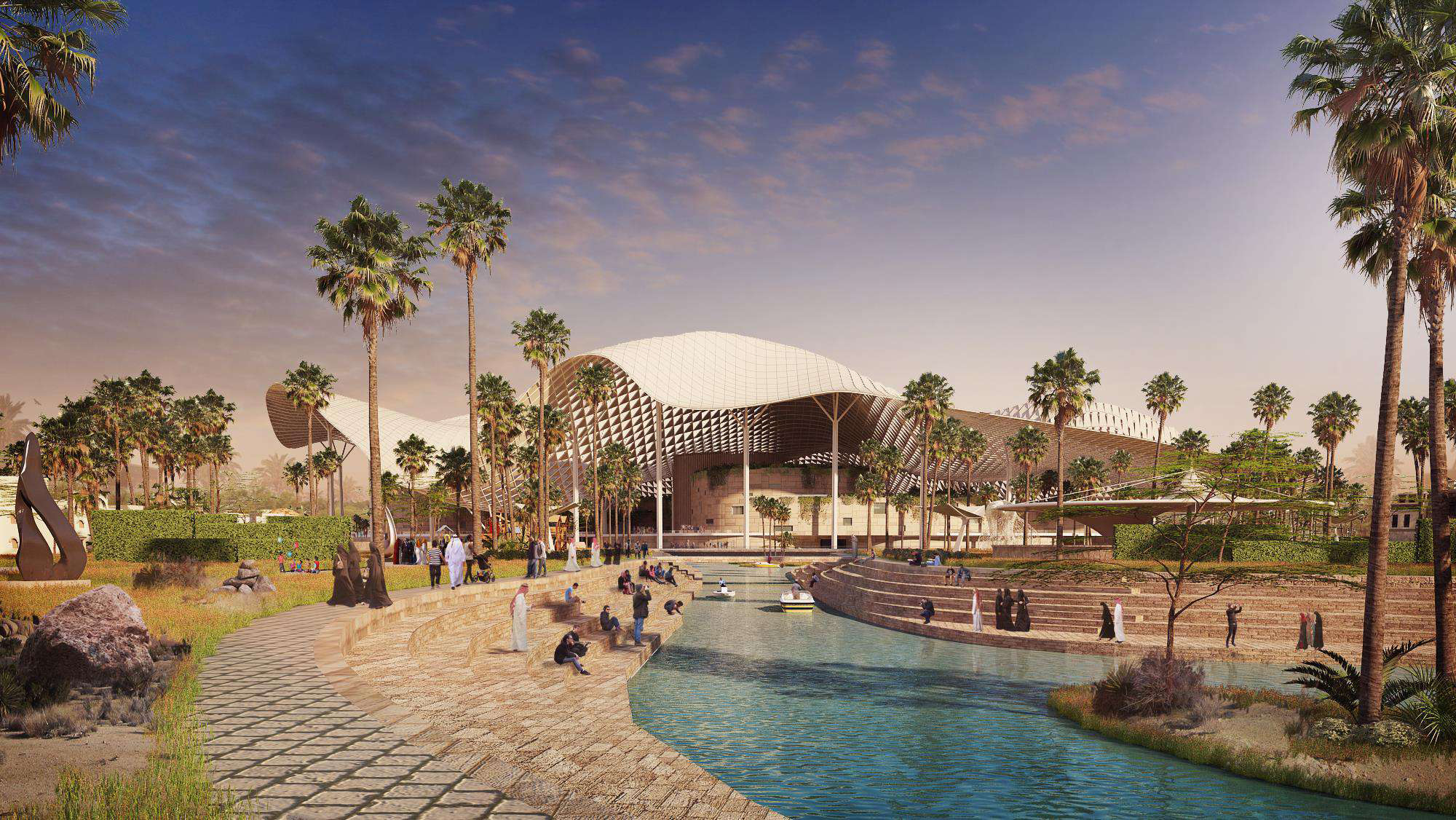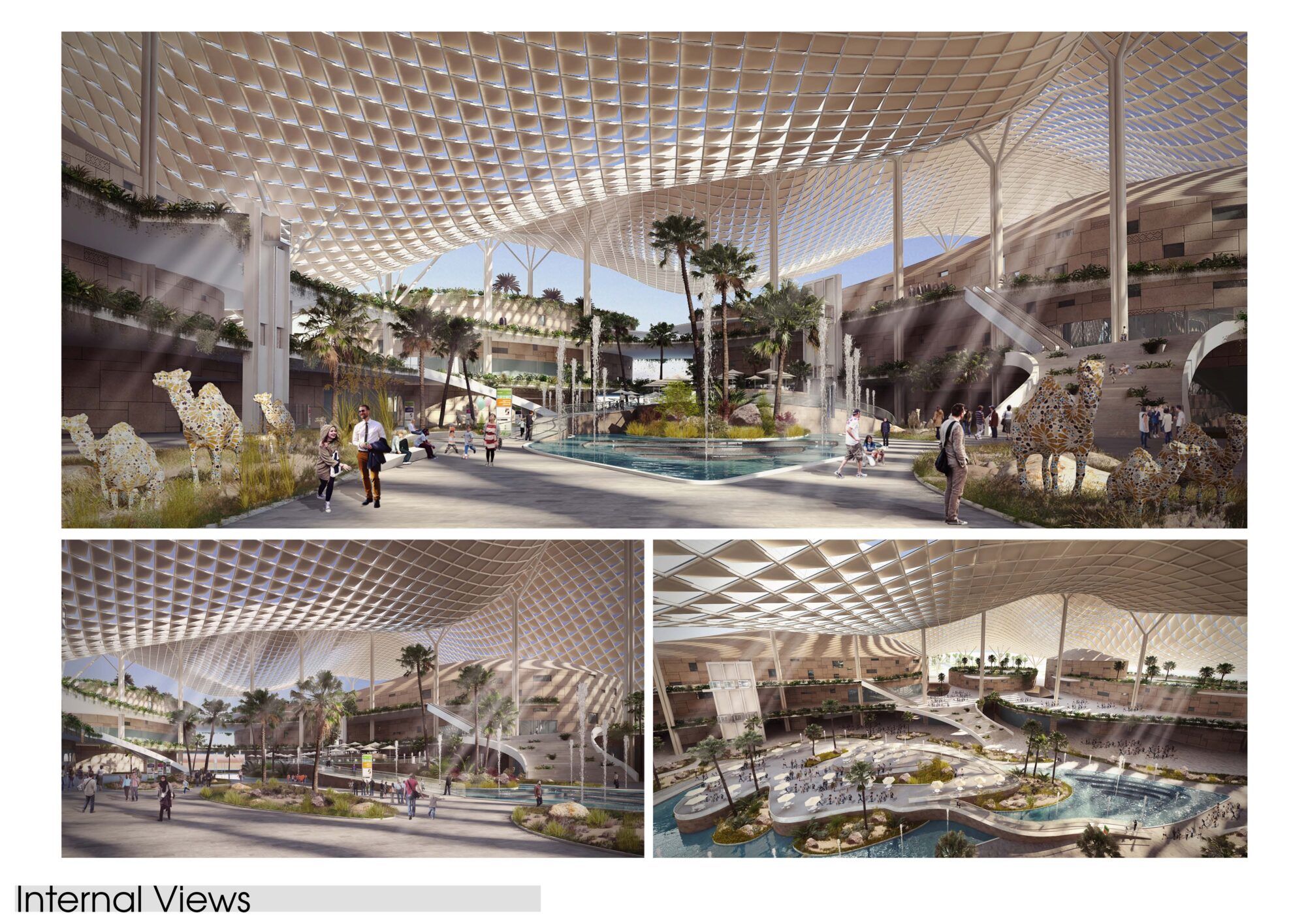Global Camel Village

Location: Al Sayaheed, Saudi Arabia
Role: Museum Designer for International Competition (one of three finalists); collaborated with Riyadh architecture firm, Interactive Development Co. Ltd.
Program: Art, History and Science Museums, Retail, Restaurants, Entertainment, Sports Complex, Convention Facilities, Amphitheater, Planetarium, Support Areas, International Villages, etc.
Central Building Area: 2,112,000 sf
Building Areas Outside Central Building: 3,768,000 sf
Status: Client awarded project to another finalist in 2018
Description:
Global Camel Village is conceived as a new type of world-class cultural destination and attraction that celebrates the camel and its importance to the history and development of the Kingdom of Saudi Arabia. It is not an exaggeration to say that without the camel, there may not be a Saudi Arabia, certainly not the one that flourishes today. This conceptual design proposes a year-round permanent attraction that builds upon the success of the King Abdulaziz Camel Festival. Having just completed its second year of operation, the time has come to transition from the array of current temporary structures to a showcase of creative desert-style architecture and landscaped environments.
One of the most beautiful aspects of the Saudi Arabian desert landscape is the natural shapes of the sand dunes that are formed by the strong desert winds. Images of camels and sand dunes fit perfectly together in the public’s memory.
This design concept is based on this unique desert condition. Imagine a giant oval-shaped carpet laid down on top of a vast sand dune area. This carpet is then frozen in the shape
of the dunes below, and becomes an iconic floating roof over the central area of Global Camel Village. In this design, the floating roof becomes a “sun filter” formed by a “thin-shell” steel structure clad in solar tiles, providing all of the energy needs for the spaces below. It is perforated throughout by triangular gaps, providing a light appearance and filtered views of the sky above. Because the blowing winds forms the sculptural forms of the dunes, the “sun filter” also takes on a wind swept shape, like a fabric blowing in the wind.
The internal arrangement of the central village components are designed to create a dramatic central “oasis” space with views of the underside of the curving roof above. This central “oasis” space is an open-air covered space, with natural airflow and shade making it more comfortable throughout the various seasons. Indigenous desert landscaping found in oasis environments is utilized, along with sunken pools, to create a lush environment that forms the heart of the overall village.



